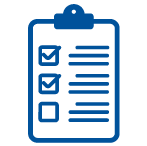Steps to Reporting Climate Risks and Opportunities
The following four steps are considered common practice for organizations to assess actual and potential risks and opportunities, report these risks and opportunities, and measure progress of managing risks and opportunities through metrics and targets.

Step 1: Discover
- Locate the team or person within the organization responsible for public reporting and disclosure to discuss any past or current evaluation of climate risks and opportunities.
- Conduct a gap analysis and peer benchmark against the 11 recommendations to determine the organizations readiness and maturity relative to peers, industry best practices, and market expectations.
- Understand stakeholder, customer, or investor requests for climate reporting.
- Develop a roadmap to improve the organization's alignment with the TCFD recommendations.

Step 2: Assess
- Conduct a GHG inventory to determine the organizations Scope 1, 2, and 3 emissions.
- Identify historical extreme weather events the organization has experienced and the associated financial impacts (The U.S. Climate Resilience Toolkit is a resource).
- Conduct a scenario analysis to assess forward-looking transition risks and opportunities and physical climate risks the organization may face in the future.
- Conduct an assessment to determine the relevance and importance of these risks and opportunities to the organization's strategic and financial position under the scenarios analyzed.
- Establish goals, metrics, and targets to reduce and manage climate risks and opportunities now and into the future.
- Develop a transition and adaptation plan that describes the actions the organization is taking to achieve these goals, metrics, and targets and the efforts being taken to manage and minimize the risks of not achieving these goals, metrics, and targets.

Step 3: Report
- Prepare content for disclosure through existing reporting channels in alignment with relevant frameworks and standards (e.g., TCFD's principles (pdf) for effective disclosure).
- Disclose a transition and adaptation plan outlining the goals, metrics, and targets to minimize physical and transition risks and maximize opportunities.
- Report and communicate goals, metrics, targets, and progress to internal and external stakeholders.

Step 4: Manage
- Implement the roadmap and plan actions.
- Monitor and regularly re-evaluate risks, opportunities, progress, and barriers.
- Continually assess and report progress and opportunities for improvement.
